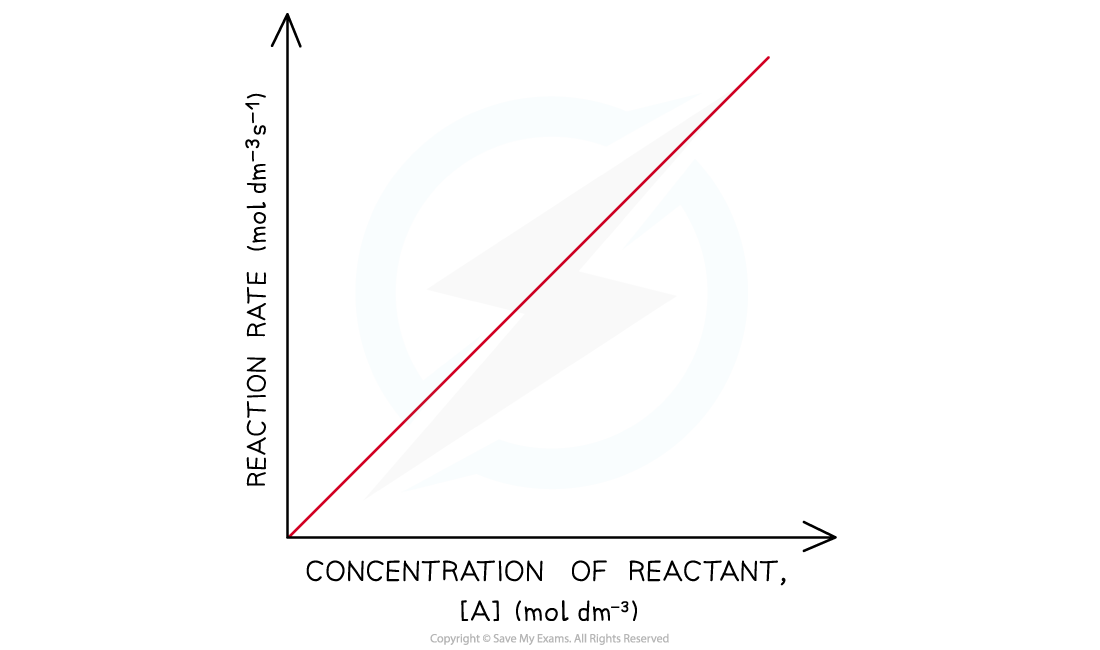Rate-Concentration Graphs (OCR A Level Chemistry A): Revision Note
Exam code: H432
Rate-Concentration Graphs
Reaction order using rate-concentration graphs
In a zero-order reaction, the rate doesn’t depend on the concentration of the reactant
The rate of the reaction therefore remains constant throughout the reaction
The graph is a horizontal line
The rate equation is rate = k

Rate-concentration graph of a zero-order reaction
In a first-order reaction, the rate is directly proportional to the concentration of a reactant
The rate of the reaction increases as the concentration of the reactant increases
This means that the rate of the reaction decreases as the concentration of the reactant decreases when it gets used up during the reaction
The graph is a straight line
The rate equation is rate = k[A]

Rate-concentration graph of a first-order reaction
In a second-order reaction, the rate is directly proportional to the square of concentration of a reactant
The rate of the reaction increases more as the concentration of the reactant increases
This means that the rate of the reaction decreases more as the concentration of the reactant decreases when it gets used up during the reaction
The graph is a curved line
The rate equation is rate = k[A]2

Rate-concentration graphs of a second-order reaction
Examiner Tips and Tricks
Careful - sometimes when asked to complete calculations for the rate constant, k, the exam question will give you a graph as well as tabulated data. Do not ignore the graph as this demonstrates the order of one of the reactants, while the tabulated data allows you to determine the order for the other reactants.

Unlock more, it's free!
Did this page help you?